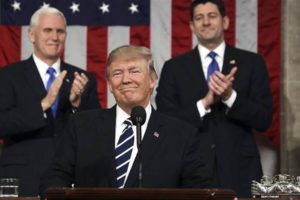Republicans are still celebrating their greatest mid-term election victory in 72 years, but Democrats are gearing up for a fight over who will pay to rebuild Uncle Sam’s house. The federal government’s budget is in disarray with annual deficits hitting $1.4 trillion and the national debt hovering around $14 trillion. Democrats think 98% of Americans should not pay higher taxes; the Republicans say 100% should not. In 2001 and 2003, George Bush made broad-based tax cuts, but those cuts are set to expire soon and everyone’s taxes will rise sharply on January 1st unless Congress intervenes. Unfortunately, the debate is becoming more about politics and populist anger towards one class of citizens, and less about stabilizing the federal government’s budget and creating an environment that fosters private sector growth.
Democrats largely believe that Wall Street’s excesses caused the “Great Recession”, so higher taxes on high-earners are part of the solution. That is why Obama, Pelosi, and Reid’s top priority before the mid-terms were to ensure that the Bush tax cuts expire at the end of this year for households earning more than $250,000, but are extended for everyone else. This misguided strategy will place pressure on an economy that is slowly recovering from a deep financial crisis. Tax hikes that are ill-timed can tip weak economies back into recession, which America experienced in 1937 during the protracted “Great Depression”. Higher taxes on the most productive earners combined with waning fiscal stimulus and looming budget deficits at the state and local level, will make an anemic growth rate weaker still.
The argument between both parties is trivial and rife with politics because the actual money at stake is, in the larger scheme, miniscule. Raising taxes on the top 2% of earners, as the Democrats proposes, would bring in $34 billion next year: about enough to cover nine days’ worth of the federal deficit. Tax revenue is expected to rise to 19.6% of GDP in 2020 if all the tax cuts are extended; raising rates on top earners would lift the ratio to only 20%. Federal spending is projected to reach 24% of GDP in 2020, so both proposals fail to bridge the gap between spending and taxes.
Republicans are convinced that voters restored them to power with a “mandate” to reduce government spending and prevent unnecessary tax increases. GOP leaders such as Boehner and Cantor argue that government is too big and the budget must be reengineered to reduce the amount of private sector resources that are being devoured. The popular idea that America is already paying too much in taxes does not bear out in the numbers, taxes this year will come to less than 15% of GDP, the lowest share since 1950. Republicans have done well at expressing the people’s frustration with government, while failing to clarify how they would make fundamental “course directions” that will have a real impact on the size of government.
Mr. Boehner has proposed to roll back government spending to its level in 2008, but this would require more than just terminating Mr. Obama’s policies. Government began growing under the Bush Administration, largely because the public wanted much more security, entitlements, and regulation. Mr. Bush beefed up domestic security, entered two wars, passed an enormous prescription drug benefit for seniors, and agreed to saddle companies with the Sarbanes-Oxley Act when the public demanded a response to corporate excesses spurred by the collapse of Enron and WorldCom. All of this was done magically without raising taxes.
Federal spending shot up from 21% of GDP during the final year of the Bush Administration to 25% in 2009. However, the same trend occurred in almost every rich country across the world, for the same reason – bail outs, stimulus, and a smaller GDP. Mr. Geithner cannot sell taxpayer investments in banks and car companies fast enough, so much of the spending incurred during 2009 is starting to wind down. Other leaders in the GOP proclaim that repealing ObamaCare would impact government spending, but that assertion is disingenuous. Obama’s healthcare reform plan does not contribute to spending, but an ageing population with more retirement and health needs combined with rising interest on the national debt are the primary culprits.
Analyzing the federal government’s budget reveals that 70% of taxpayer’s money goes to Social Security, Medicare, Medicaid, and interest on the national debt. The remaining portion is gobbled up by the Department of Defense, Education, Transportation, Veteran’s Administration, FBI, DEA, etc. The pork barrel projects that routinely embarrass members of Congress year after year account for less than 1% of the entire budget. Republicans will have to make some unprecedented choices if they plan to balance the budget through spending cuts alone.
Democrats will have to face the reality that raising taxes on the rich alone will not fix the deficit. At some point, Republican leaders will have to be honest with the party base and brace them for higher taxes. Both parties are waiting for a bi-partisan debt commission to release their recommendations on December 1. I am not convinced that either party will have the courage to ignore politics and implement the proposals that will restore economic prosperity. Voters must hold elected leaders accountable to campaign promises. America needs a genuine austerity program that will give comfort to the international community while providing certainty to bond and currency markets. Both Government belt tightening and more tax revenue as a share of GDP will be needed if we want to get Uncle Sam’s house back in order.




